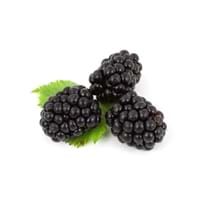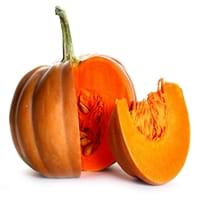Health Benefits
Cancer prevention, Heart care, Increases metabolic rate, Reduces stress, Treatment of dysentary, Treatment of skin Diseases
Arthritis treatment, Cancer prevention, High Cholesterol Regulation, Lower blood pressure, Helps Prevent cataract, Prevents gall stones, Ulcer treatment, Weight loss properties
General Benefits
Digestive aid, Maintains healthy cholesterol level, Strengthens bones
Boosts respiratory health, Eliminate parasites and infections, Protects against birth defects, Strengthens bones
Skin Benefits
Hydrates skin, Skin rejuvenation, Skin revitalization
Heals sunburn, Hydrates skin, Skin rejuvenation
Hair Benefits
Promotes longer and healthier hair
Regulates hair growth
Allergy Symptoms
Facial muscle tension, Pressure in sinus, Respiratory congestion, Runny nose, Sneezing, Tingling sensation in wrist and face
Abdominal cramps, Anaphylaxis, Digestive Problems, Dizziness, Eczema, Fainting, Hives, Inflammation, Itching, Tingling sensation in wrist and face, Vomiting, Wheezing
Side Effects
Nausea, Vomiting, Might cause change of urine color
Kidney and gallbladder diseases
Best Time to Eat
Best if taken as a breakfast (or empty stomach), As a snack in the late afternoon, Don't consume at night and before bed, Eat the fresh ones, avoid mixing with any other foods, don't eat after meal., Morning time (before lunch)
Along with meal, Don't eat after meal, Morning time (before lunch)
Vitamin B5 (Pantothenic Acid)
Vitamin C (Ascorbic Acid)
Vitamin K (Phyllochinone)
Phytosterol
Not Available
Calories in Fresh Fruit with Peel
Calories in Fresh Fruit without Peel
Not Available
Calories in Frozen Form
Not Available
Calories in Dried Form
Not Available
Calories in Pie
Not Available
Season
Spring, Summer
All seasons
Varieties
Prime Ark, Prime Jim, Illini Hardy, Kiowa, Shawnee, Apache, Arapaho, Chester, Hull, Natchez, Navaho and Triple Crown and Von
Jarrahdale, Peanut, Lakota, Cow, Sugar, Caribean, Red kuri, Buttercup and Pink lady
Color
Purplish black
Blue, Green, Orange, Red, White
Inside Color
Magenta
Creamy Yellow
Taste
Juicy, Sweet
Creamy, Soft, Sweet
Origin
Asia, Europe, North America, South America
Mexico
Soil Type
Well-drained
Clay loam, Sandy loam, Well-drained
Climatic Conditions
Dry, Warm to hot climate
Warm to hot climate
Facts about
- There are around 2000 varieties of blackberries throughout the world.
- 80-85 degrees is the ideal temperature for its production.
- Leaves of blackberry tree are used to treat sore throats and mild inflammation of the gums.
- The name pumpkin has its roots in the Greek word ‘pepon’, meaning ‘large melon’.
- The largest pumpkin ever grown weighed 1,140 pounds.
- Pumpkins were once known for removing freckles & curing snake bites.
Top Producer
United States of America
China
Other Countries
China, New Zealand, Serbia, South Africa
Egypt, India, Indonesia, Iran, Italy, Mexico, Russia, Spain, United States of America
Top Importer
United States of America
United States of America
Top Exporter
Mexico
China
Botanical Name
Rubus Fruticosus
Cucurbita maxima
Synonym
Rubus Millspaughii or Rubus Laciniatus
Cucurbita pepo, Squash
Subkingdom
Tracheobionta
Tracheobionta
Division
Magnoliophyta
Magnoliophyta
Class
Magnoliopsida
Magnoliopsida
Subclass
Rosidae
Dillenhidae
Order
Rosales
Cucurbitales
Family
Rosaceae
Cucurbitaceae
Species
Rubus fruticosus
Cucurbita mixta
Generic Group
Rose
Not Available
Difference Between Blackberry and Pumpkin
We might think that Blackberry and Pumpkin are similar with respect to nutritional value and health benefits. But the nutrient content of both fruits is different. Blackberry and Pumpkin Facts such as their taste, shape, color, and size are also distinct. The difference between Blackberry and Pumpkin is explained here.
The amount of calories in 100 gm of fresh Blackberry and Pumpkin with peel is 43.00 kcal and 26.00 kcal and the amount of calories without peel is Not Available and 30.00 kcal respectively. Thus, Blackberry and Pumpkin belong to and category.These fruits might or might not differ with respect to their scientific classification. The order of Blackberry and Pumpkin is Rosales and Cucurbitales respectively. Blackberry belongs to Rosaceae family and Pumpkin belongs to Cucurbitaceae family. Blackberry belongs to Rubus genus of Rubus fruticosus species and Pumpkin belongs to Cucurbita genus of Cucurbita mixta species. Beings plants, both fruits belong to Plantae Kingdom.









